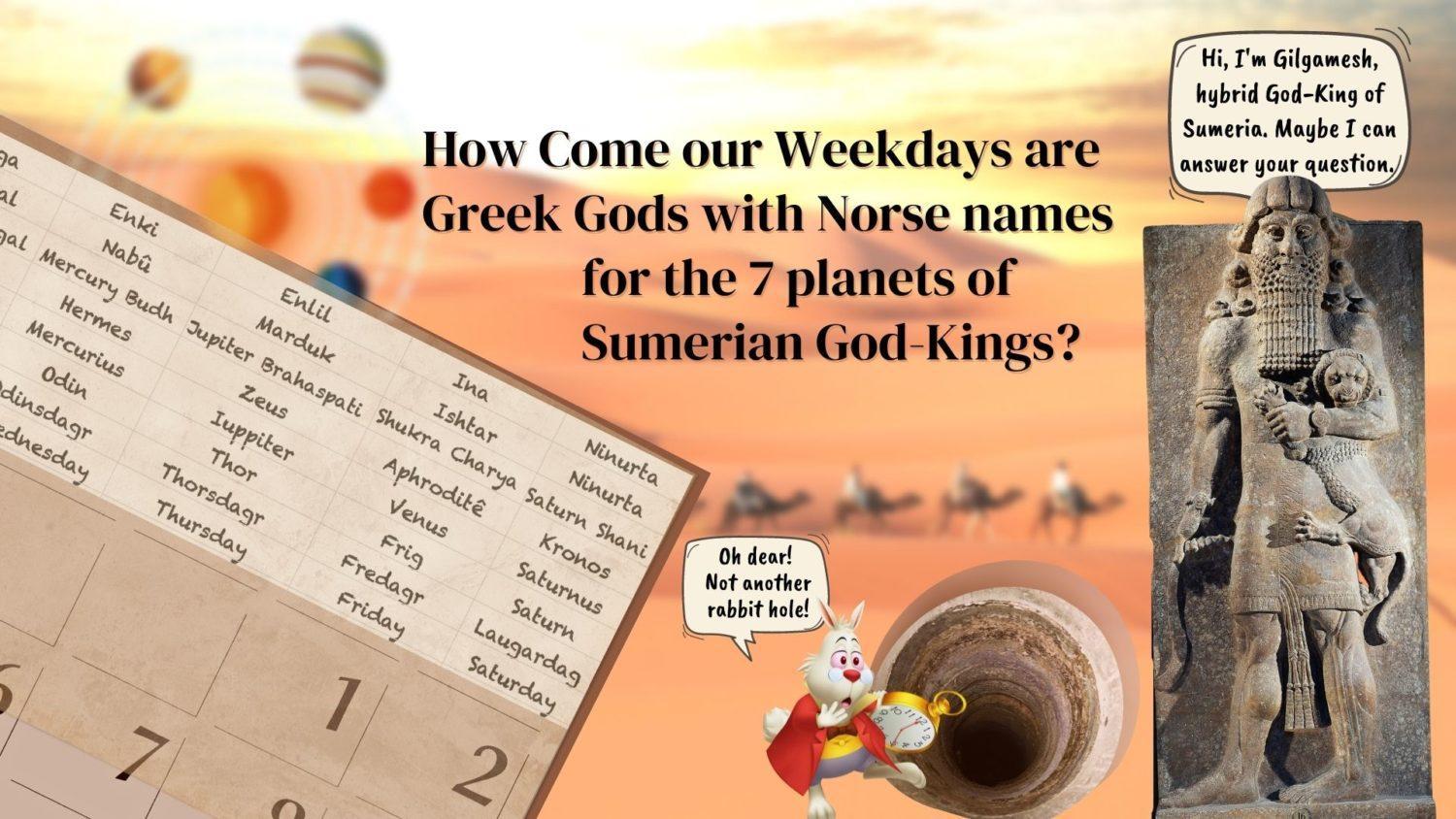
Our week has seven days. But the ancient Incans and the gentle Etruscans used an 8-day week. Uh Oh! Is this another rabbit hole? Yup. Egyptians had a 10-day week. The oldest known 7-day week came from Sumeria, based on the five planets visible with the naked eye, plus the Sun and the Moon. These were also the seven primary Gods: Utu, Nanna, Guga, Enki, Enlil, Ina, and Ninurta. Ever since then, the 7-day week is accepted in most societies on Earth. We should thank the Sumerians!
Executive Summary:
- Our weekdays come from Sumeria and the seven planets via Babylonian, Greek, and finally Roman gods: Sôl, Luna, Martes, Mercurius, Iuppiter, Venus, and Saturnus.
- How did Sumerian Gods get into Old Norse? Via Rome of course! The Norse Gods are Sol, Moon, Tyr, Odin, Thor, Frigg, and Saturn.
- Who was Sumerian King Gilgamesh? According to the Epic of Gilgamesh, he was a hybrid god-man. Maybe all humanity’s ancient gods were extra-terrestrial visitors from off-planet.
- Weekday Sumerian gods shrouded in mystery, after a great biblical flood some 6,000 years ago, when all records were lost except for ancient stone tablets etched in cuneiform letters.
- But wait! There’s more! Modern Translations of Sumerian tablets describe the great flood and a King’s List going back 241,000 years. Sumerians understood our planets to orbit the Sun, which was later “re-discovered” by Copernicus and Galileo. Is it possible?
- Conclusion: The seven celestial bodies visible with the naked eye are the Sumerian Gods, and root of our weekdays. We call them the Sun, Moon, Venus, Mars, Jupiter, and Saturn. These are the ancient Gods and the days of the week.
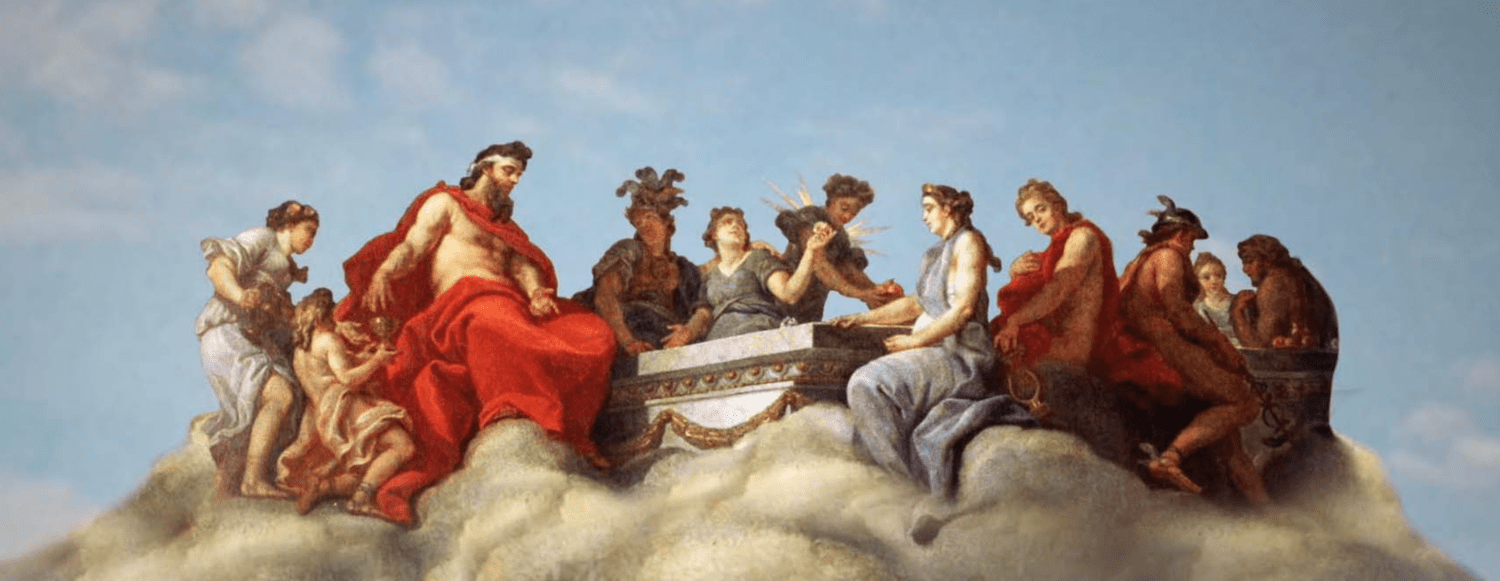
1. Our weekdays from Sumeria via Greece and Rome
Ancient Greeks also used a ten-day week. Later they adopted the Babylonian 7-day week. The Greek planetary Gods and the weekdays were Helios, Selene, Ares, Hermes, Zeus, Aphrodite, and Kronos.
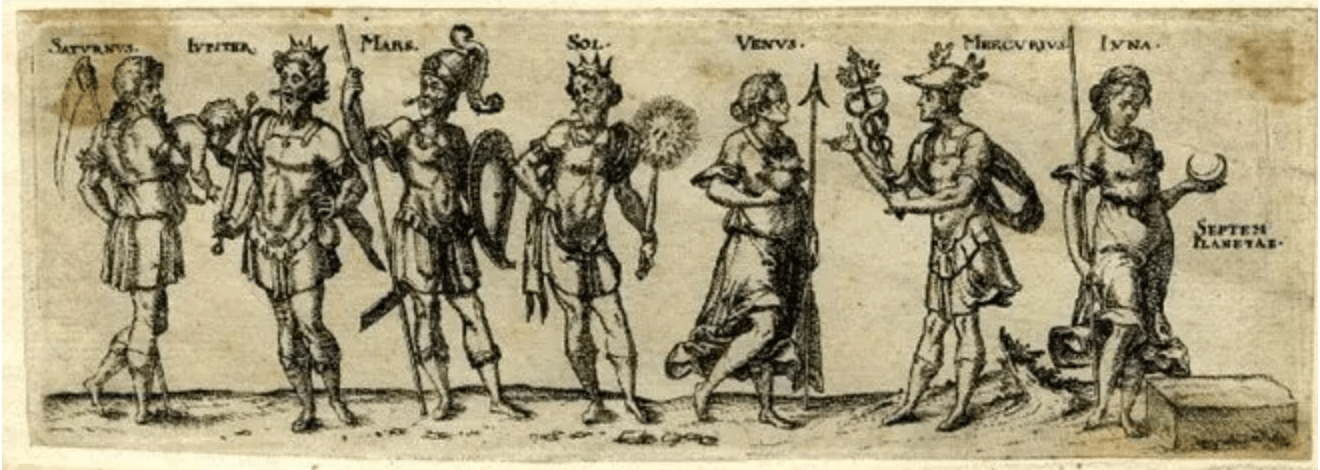
A few centuries later, Romans substituted their own names for the Greek Gods. So, our modern 7-day week is based on the seven planets and Roman Gods: Sôl, Luna, Martes, Mercurius, Iuppiter, Venus, and Saturnus.
Sunday became “A DAY OF REST”.
In 321 CE, Roman Emperor Constantine issued a decree that “on the venerable day of the Sun let the magistrate and people residing in cities rest, and let all workshops be closed”. Thus, Sunday became the day of rest for everybody. City people, upper classes, Christians, and Pagans alike took the day off everywhere in the vast empire. Rome decided that Sunday was the first day of the week. The subsequent days were Moon-day, Mars-day, Mercury-day, Jupiter-day, Venus-day, and Saturn-day. Here’s the line-up.
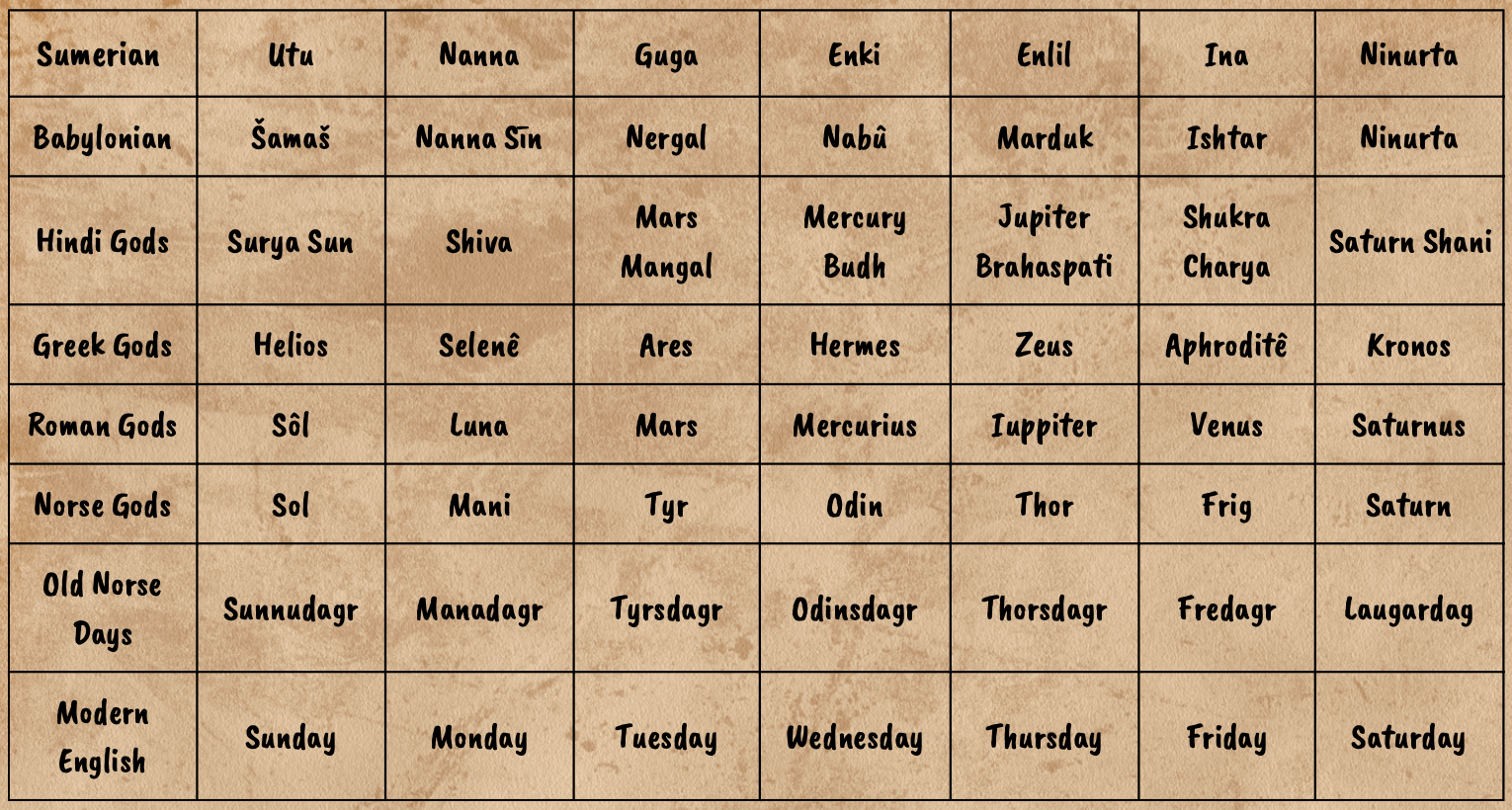
2. How did Sumerian Gods Get into Old Norse?
Via Rome, of course! Here are the Viking Gods and planets for each day:
Sunday was for the Sun. In Latin they called it God’s day or ‘Dies Dominica’. The next day Monday is Moon-day. Tuesday is for Tyr, Norse god of War and the red planet Mars. Wednesday is for Odin or Wodan, ruler of the planet Mercury. Thursday is Thor’s day, god of thunder and the planet Jupiter. Friday for Frigg, the beautiful goddess of love and the planet Venus. Saturday is for Saturn, nasty god of Time with a sharp sickle, sometimes called ‘Sabbath’ or Sabato. Most Germanic countries called it Saturn-day. But the Old Norse didn’t want to worship an evil god like Saturn. So, “Satur-day” was called “Laugardag”, meaning “wash day”.




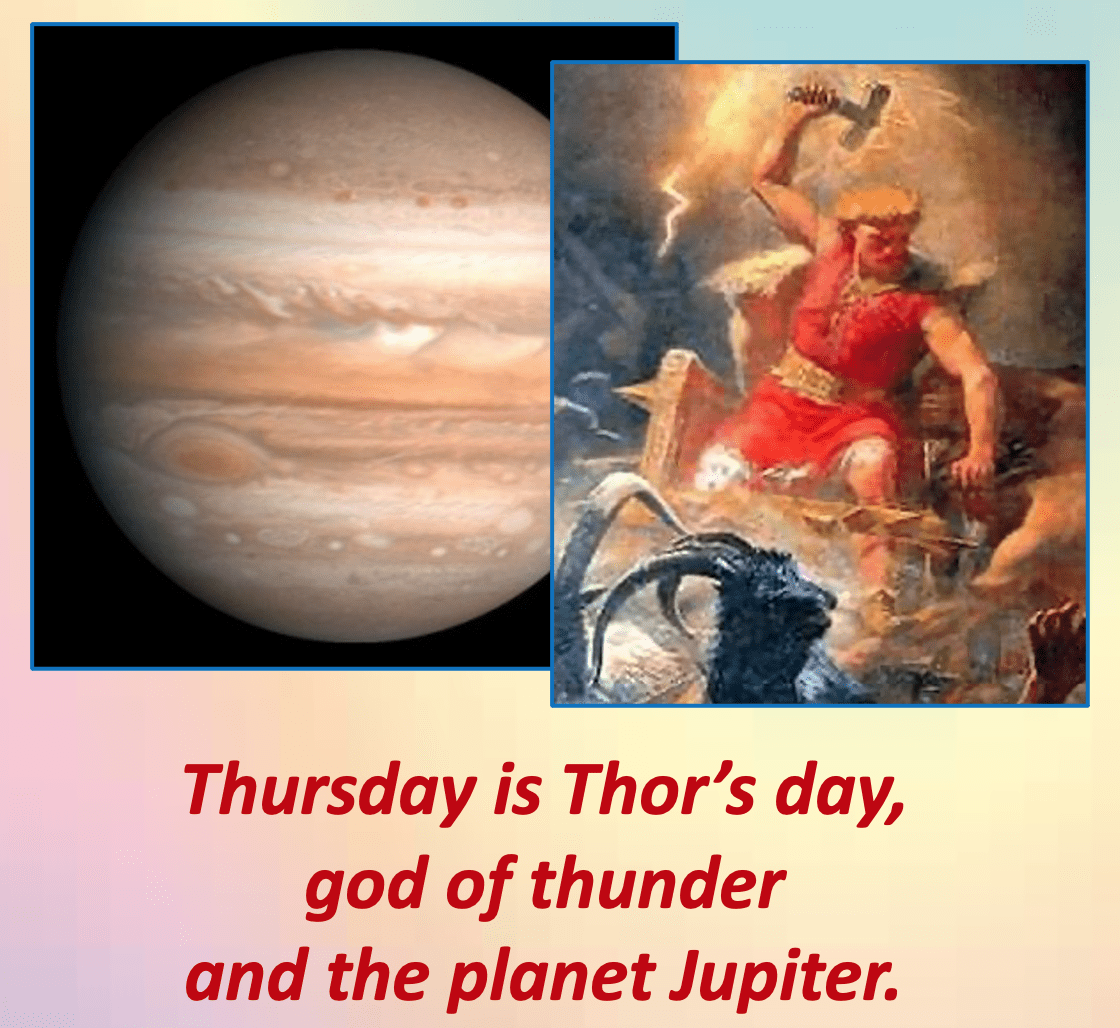

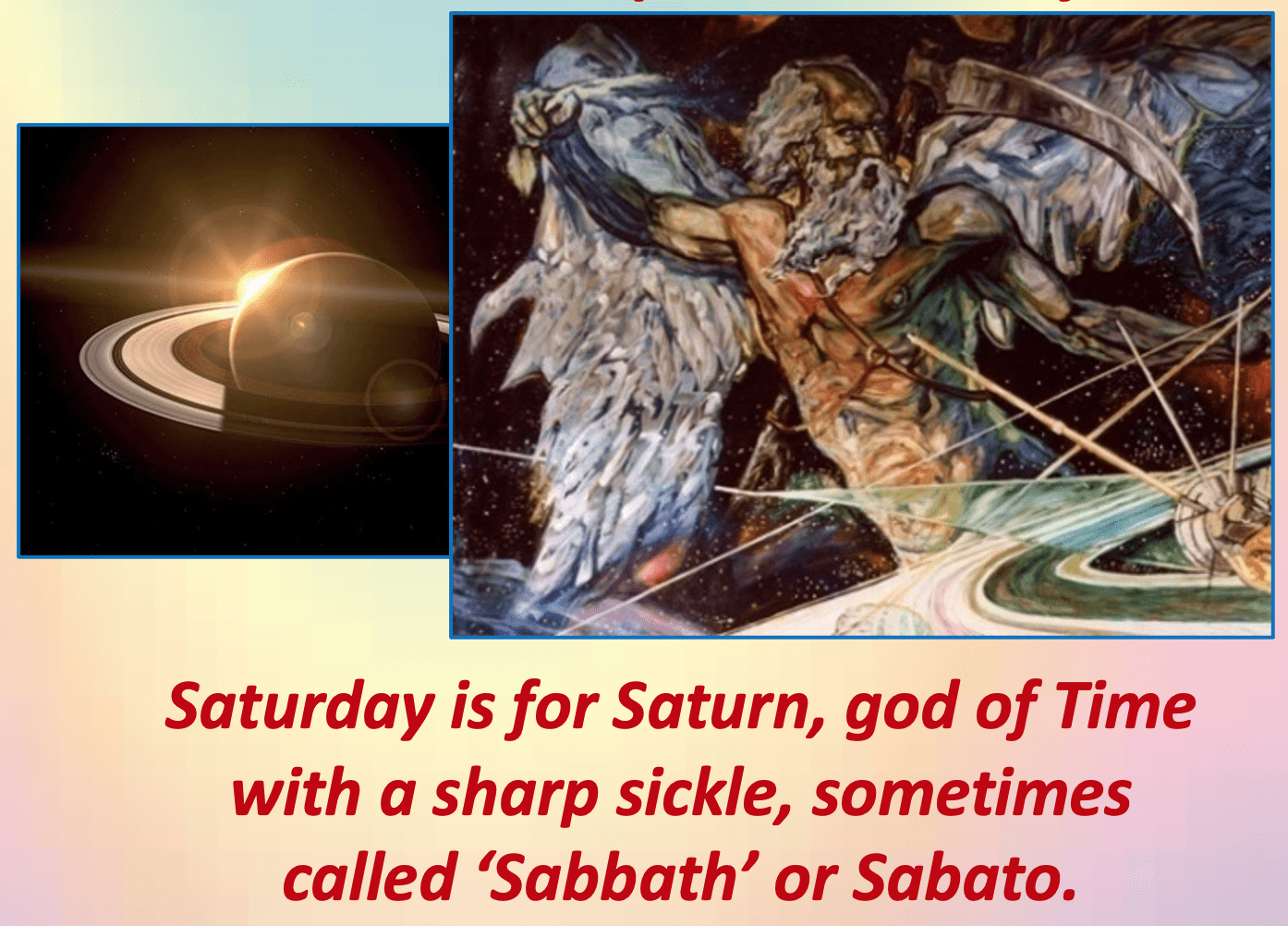
3. Who was Sumerian King Gilgamesh?
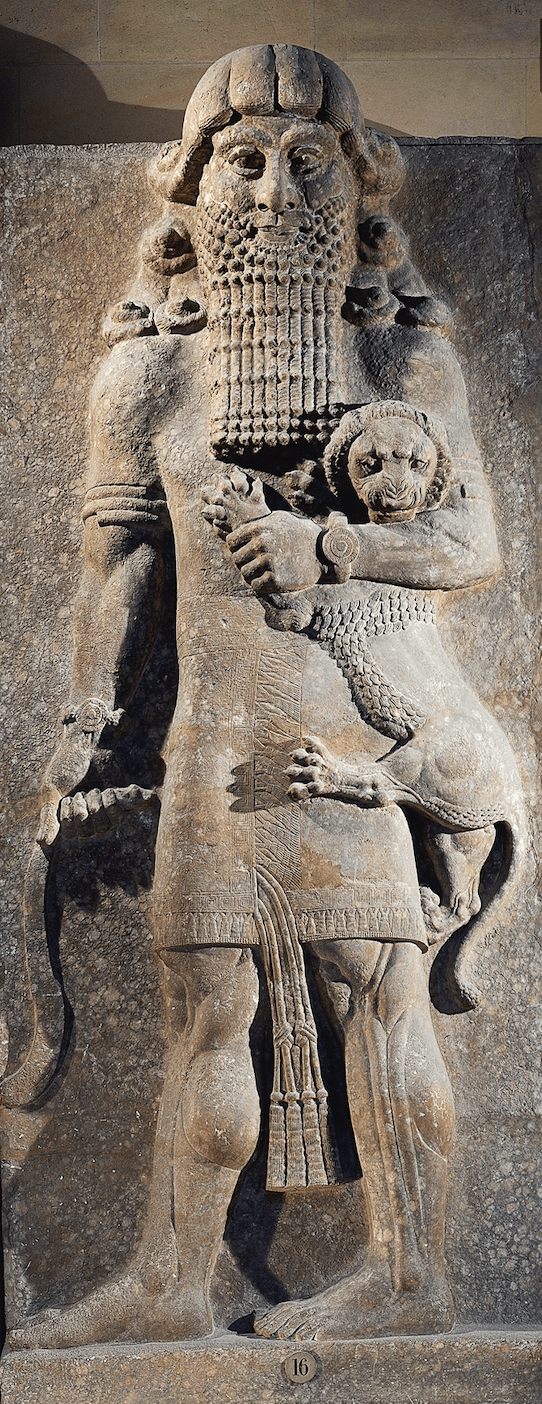 Gilgamesh was a legendary hybrid God-man, and King of the Sumerian province of Uruk (pronounced Iraq). King Gilgamesh was revered as a God, and legends describe his exploits in five surviving Sumerian poems. Some say he lived in the 3rd millennium BCE. But it seems he may have lived many millenniums earlier, since the Epic of Gilgamesh appears to have inspired the famous Greek epic: Iliad and the Odyssey, which was written in 8th century BCE!
Gilgamesh was a legendary hybrid God-man, and King of the Sumerian province of Uruk (pronounced Iraq). King Gilgamesh was revered as a God, and legends describe his exploits in five surviving Sumerian poems. Some say he lived in the 3rd millennium BCE. But it seems he may have lived many millenniums earlier, since the Epic of Gilgamesh appears to have inspired the famous Greek epic: Iliad and the Odyssey, which was written in 8th century BCE!
In the miraculous legend of his birth, Gilgamesh’s God grandfather kept his Goddess mother under guard to prevent her from becoming pregnant, because an oracle had told him that his grandson would overthrow him. But it seems she fell in love with a mortal and became pregnant. The royal guards threw the child off a high tower to kill him, but an eagle auspiciously rescued him in mid-fall and delivered him safely to an orchard, where he was raised by the gardener.
Yes, it seems Gilgamesh did eventually overthrow his Grandfather. The Epic of Gilgamesh was rediscovered and translated in the early 1870s. But oh dear! It caused widespread controversy among biblical experts because of its similarities to the Hebrew Bible. I wonder, could the Sumerian legends be a predecessor or source document of the Bible First Testament?
4. Weekday Sumerian Gods Shrouded in Mystery
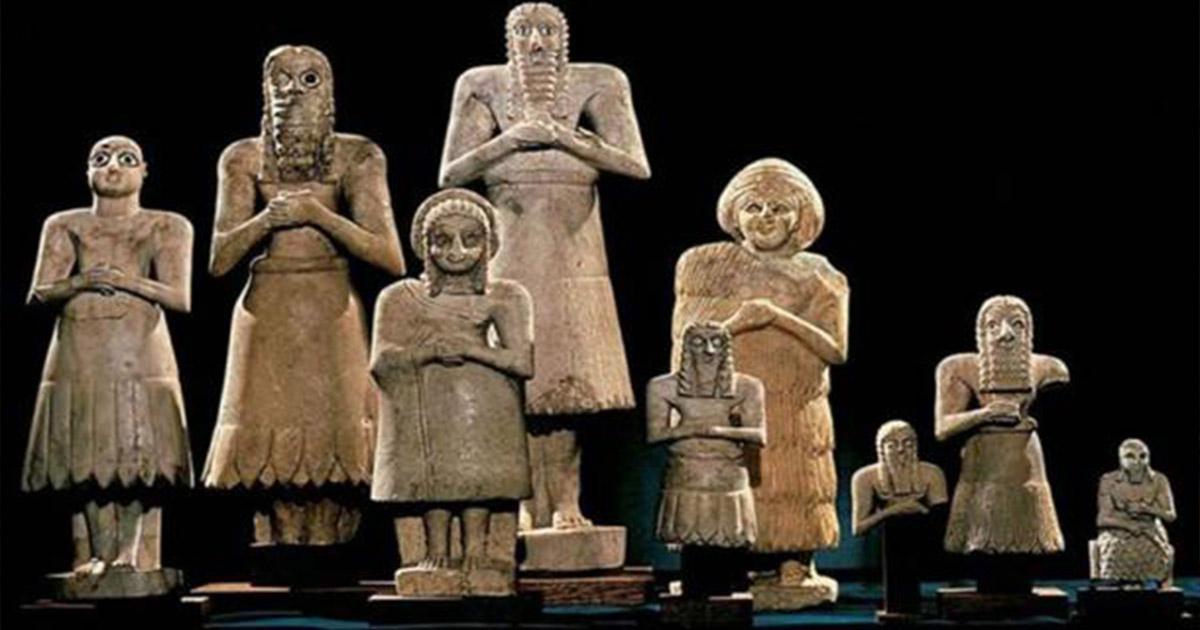
Who were the Sumerian Gods?
Sumerian history is sometimes difficult to understand, and very slow in being revealed. A great flood some 6,000 years ago destroyed most known evidence and all of civilization. So, it seems we have no idea how far back the Sumerian civilization goes. However, we do have stone statues and cuneiform writing tablets that survived the deluge. Can you translate the cuneiform scratches below? Hmmm, these tablets are tricky to read. And even more difficult to decipher what they meant. Many scholars are doing their best to sort out what actually happened.
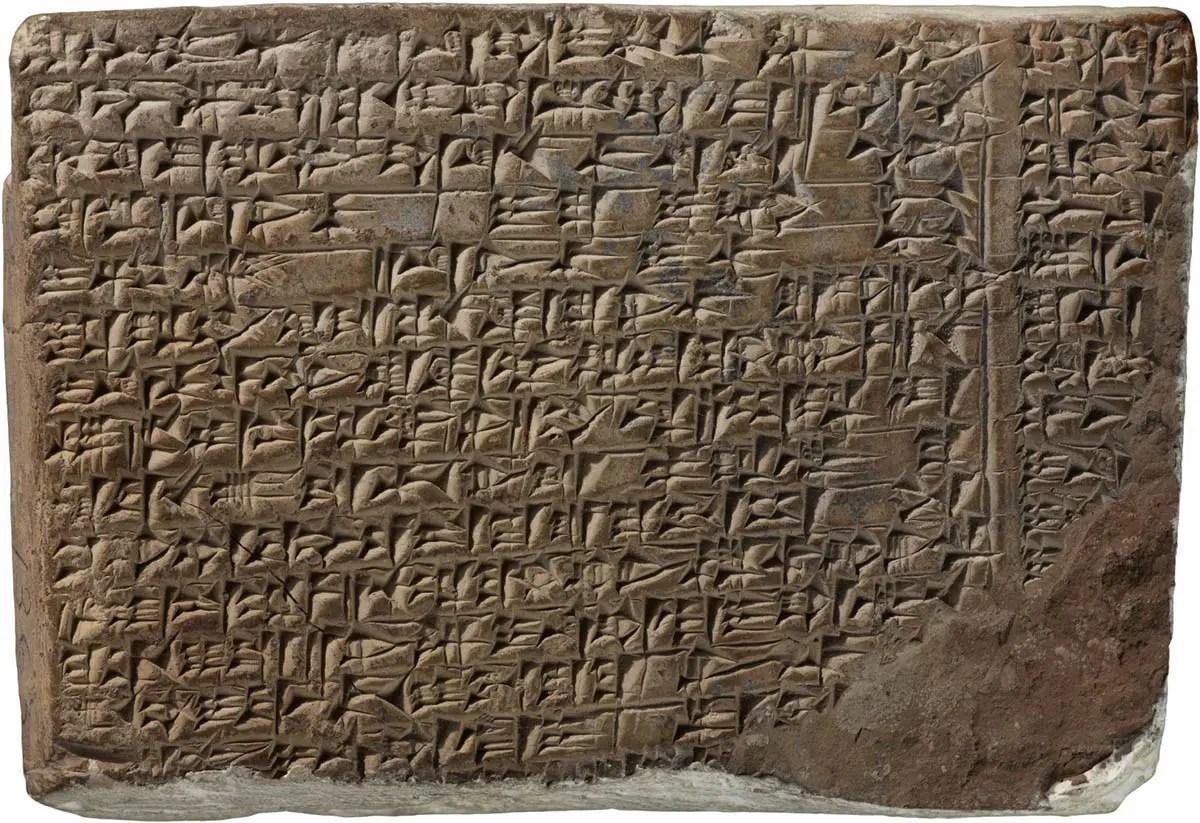 We do know from translated tablets that the Sumerians used a 7-day week, that they worshipped many gods, and they revered the planets as gods. However, the exact identities and qualities of the gods are somewhat subject to conjecture. Here’s a good guess.
We do know from translated tablets that the Sumerians used a 7-day week, that they worshipped many gods, and they revered the planets as gods. However, the exact identities and qualities of the gods are somewhat subject to conjecture. Here’s a good guess.
Sunday was for Utu, the Sun god. He represented the brilliant light of the sun, which returns every day to illuminate the lives of mankind, as well as providing the warmth to enable the plants to grow. In Sumerian tradition, he was represented with a saw knife and fiery rays. Utu was the son of Nanna, the moon god, and the twin brother of Inanna, the goddess of love and war.
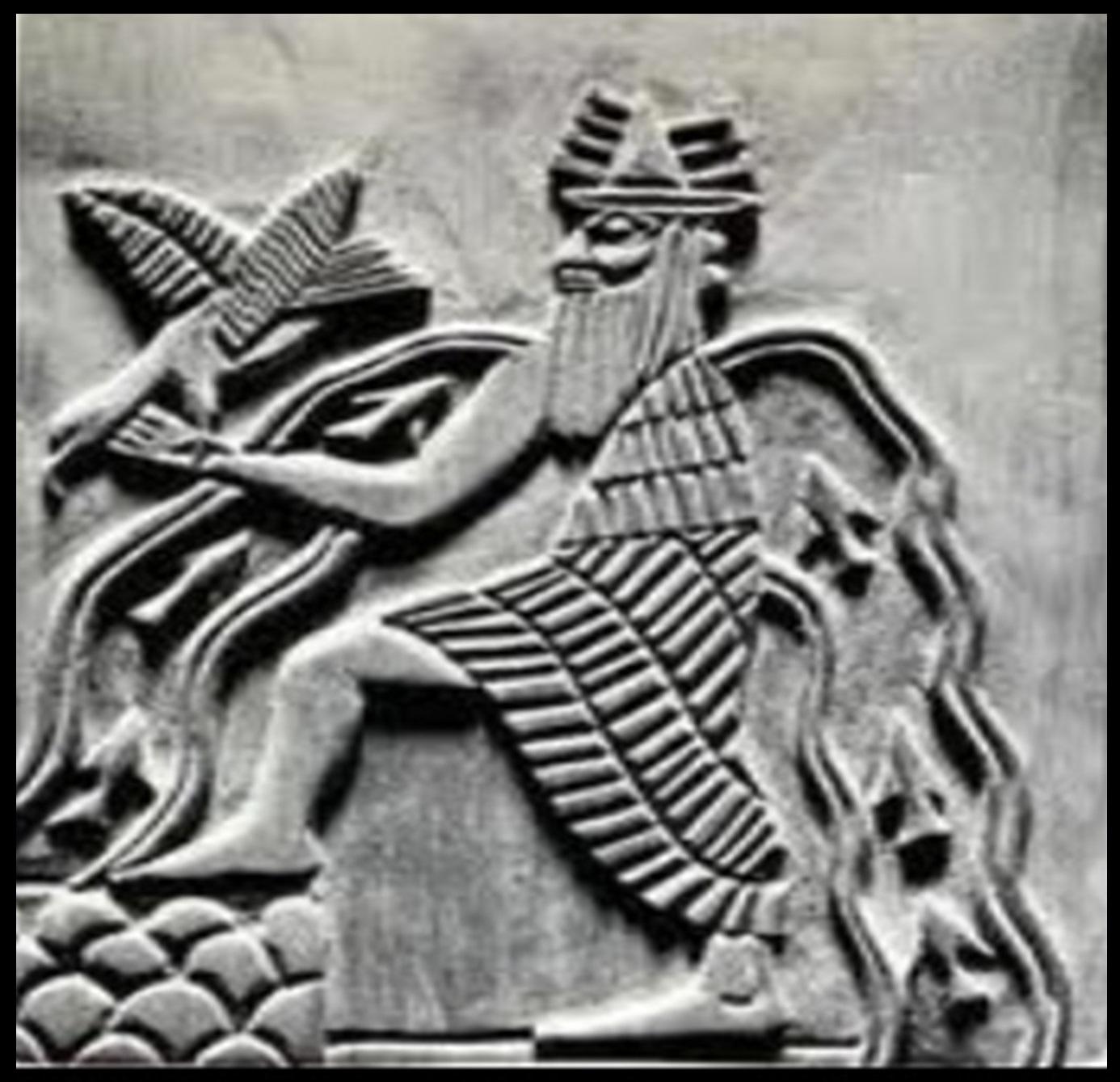 Monday was for Nanna, the moon god, born of Enlil, the air god, and his wife Ninlil, the air goddess. Ninlil followed her mother’s instructions and as a consequence was impregnated by “the water” of Enlil and conceived the moon god Nanna.
Monday was for Nanna, the moon god, born of Enlil, the air god, and his wife Ninlil, the air goddess. Ninlil followed her mother’s instructions and as a consequence was impregnated by “the water” of Enlil and conceived the moon god Nanna.
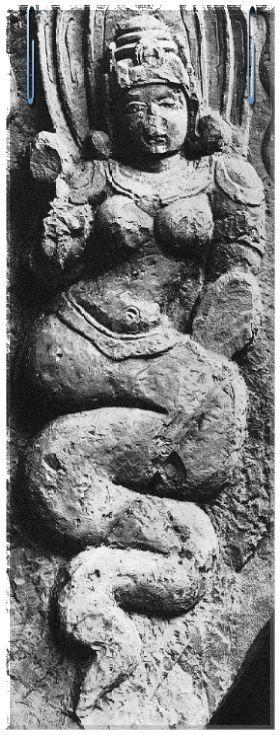 Tuesday was Mars day for the god Nergal, also called Guga or Gugalanna, ruler of the Underworld usually as the husband of Ereshkigal. He was also associated with forest fires, fevers, plagues, and war. Nergal causes all kinds of destruction and devastation.
Tuesday was Mars day for the god Nergal, also called Guga or Gugalanna, ruler of the Underworld usually as the husband of Ereshkigal. He was also associated with forest fires, fevers, plagues, and war. Nergal causes all kinds of destruction and devastation.
Wednesday was for Enki the great water god, the god of fresh water, male fertility, and knowledge. He was represented with flowing streams of water and swimming fishes. According to legend, he filled the Tigris and Euphrates rivers with sparkling water and fish. Enki was also associated with wisdom, magic, incantations, and arts and crafts.
Thursday belonged to Enlil, supreme lord, father, creator, like a “raging storm.” Enlil had the important task of allocating land and kingship to the kings, responsible for planning and creating most of the features in the cosmos. He is sometimes described as a violent and destructive god, however sometimes friendly, fatherly god, who ensured the safety and wellbeing of humans.
Friday was for Inanna, goddess of love, war, female fertility, sexual love, and procreation. Inanna was the beautiful life-giving goddess of love, ensuring the prosperity of the land and its people.
Saturday belonged to Ninurta – god of farming, healing, hunting, law, scribes, and war. In the earliest records, he was a god of agriculture and healing,

Amazing! Ancient Gods were probably just Extra-terrestrial visitors.
What’s the significance of the seven planets?
These particular seven planets are revered and worshipped in both Eastern and Western traditions. The seven pointed heptagram star can symbolize the seven planets, the seven chakras, or the seven stars of the Big Dipper linked to the Pole star, the North Star.
According to the great yogi, Paramahansa Yogananda, the seven planets symbolize the seven chakras, energy centers in the body. These seven stars are also mentioned in the Christian Bible Revelation 1:15.
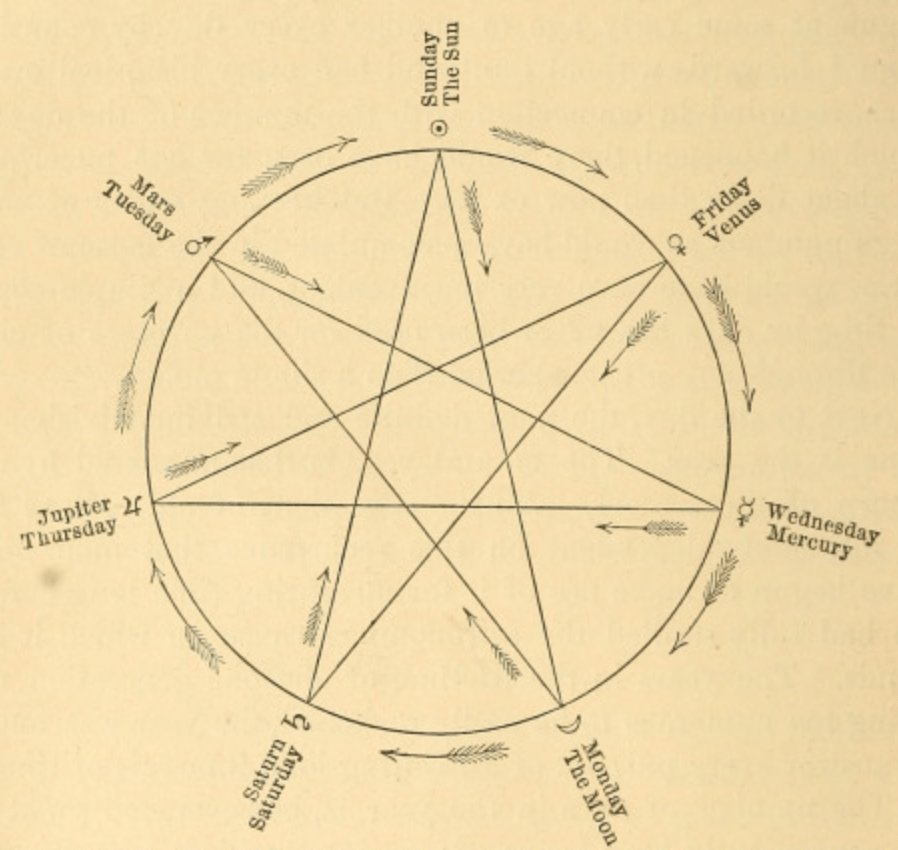 “Awakening of the seven occult centers (chakras, astral lotuses) is the sacred goal of the yogi. Western exegetes have not understood that the New Testament chapter of Revelation contains the symbolic exposition of yogic science taught to John and the other close disciples by Lord Jesus. John mentions (Rev. 1:20) the “mystery of the seven stars” and the “seven churches”; these symbols refer to the seven lotuses of light, described in yoga treatises as the seven “trap doors” in the cerebrospinal axis. Through these divinely planned “exits” the yogi, by scientific meditation, escapes from the bodily prison and resumes his true identity as Spirit.”
“Awakening of the seven occult centers (chakras, astral lotuses) is the sacred goal of the yogi. Western exegetes have not understood that the New Testament chapter of Revelation contains the symbolic exposition of yogic science taught to John and the other close disciples by Lord Jesus. John mentions (Rev. 1:20) the “mystery of the seven stars” and the “seven churches”; these symbols refer to the seven lotuses of light, described in yoga treatises as the seven “trap doors” in the cerebrospinal axis. Through these divinely planned “exits” the yogi, by scientific meditation, escapes from the bodily prison and resumes his true identity as Spirit.”
Paramahansa Yogananda
Bible Revelation 1:15-20 refers to the sacred chakras in Christianity.
“The mystery of the seven stars which thou sawest in my right hand, and the seven golden candlesticks. The seven stars are the angels of the seven churches: and the seven candlesticks which thou sawest are the seven churches.”
What’s the significance of the Seven Stars and the Big Dipper?
The star pattern of the seven brightest stars of the Big Dipper (Ursa Major), is well-known in many cultures. In Hindu astronomy, the Big Dipper is known as Sapta Rashi – the Seven Sages, or the great rishis in ancient India. Polaris, the North Star, is aligned with the Big Dipper and is a part of the Little Dipper. The Big Dipper constellation points to the North Star, although its form appears in a different direction each of the four seasons of the year. Thru the seasons, this makes a cross, or a swastika, (unrelated to the Nazi symbol). The ancient Sanskrit “Swastika” is a symbol of divinity and spirituality in Eastern religions,
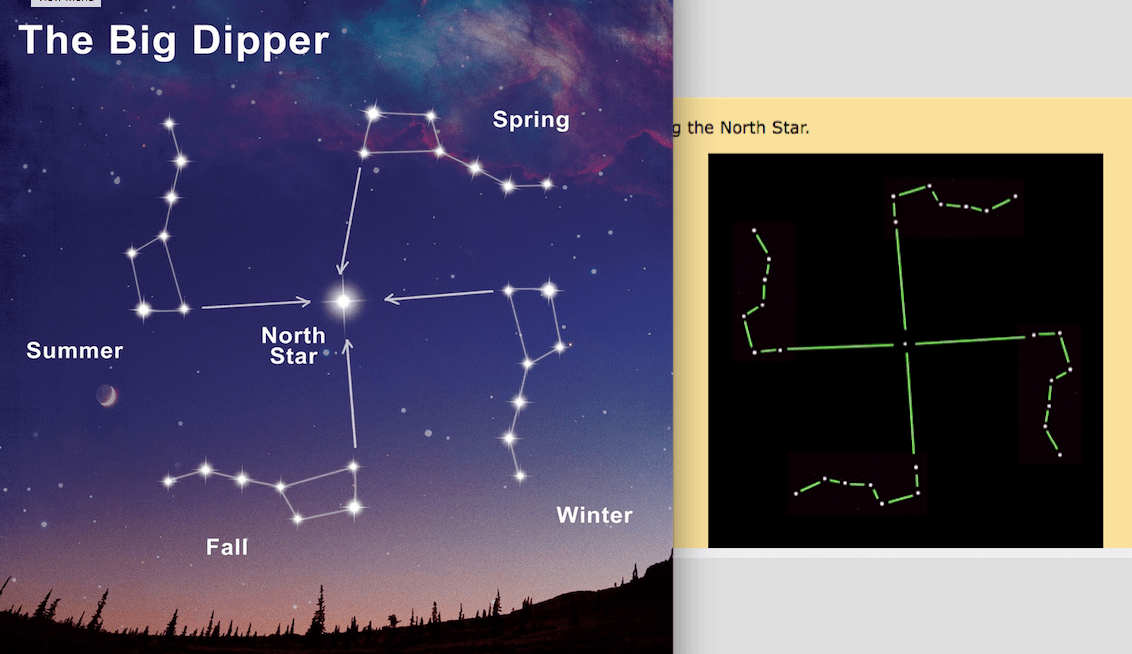
These days, we do astrology readings from the twelve signs of the zodiac. However, in the old days I’m told it was more common to use the seven stars of the Big Dipper to tell your fate. Your astrology was determined by which of the seven stars was ruling on the month and day you were born.
5. But wait! There’s more! Modern Translations of tablets describe the great flood.
How Long did the Sumerian Civilization Endure?
Oh dear! This is where human history goes into a rabbit hole. If you read the scholarly translations of Mesopotamian tablets, you will soon discover that our culture has roots long before the Bible and way before the flood. The records have been documented to go back over 241,000 years.
Today, “The Sumerian King List” remains one of the most controversial ancient texts ever discovered in history. It clearly describes how a group of multi-dimensional extra-terrestrial beings descended from the skies to rule Earth. And the total length of their domination was 241,000 years! How is that possible?
Discovered over the years by scholars in many regions of ancient Mesopotamia, copies of what is believed to be a unique manuscript, referred to as the “List of Sumerian Kings” details how in the distant past, our planet was ruled for over 200,000 years. If the tablets are authentic, this constitutes a revelation of monumental proportions regarding our hidden past. Check it out here.
This Ancient Sumerian Tablet is Said to be the Oldest Description of the Great Flood
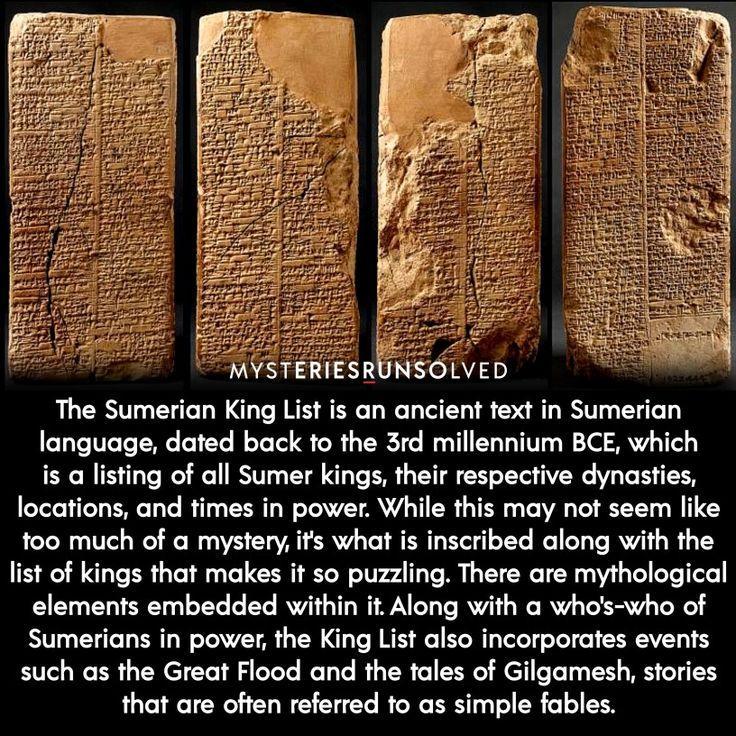
What’s the significance of the North Star?
The Earth rotates on its axis to make day and night. Straight overhead, the axis is Polaris the “Pole Star.” We call it the “North Star” since it sits at the peak of the northern hemisphere.
 The North Star is used in navigation as the central apex, because all the other stars and constellations of the zodiac appear to travel around it. The zodiac moves together. But there are seven bodies visible with the naked eye, which appear to move independently. These are the Sun, Moon, Venus, Mars, Jupiter, and Saturn. These are the ancient Sumerian Gods and the days of the week.
The North Star is used in navigation as the central apex, because all the other stars and constellations of the zodiac appear to travel around it. The zodiac moves together. But there are seven bodies visible with the naked eye, which appear to move independently. These are the Sun, Moon, Venus, Mars, Jupiter, and Saturn. These are the ancient Sumerian Gods and the days of the week.
6. Conclusion: Sumerian Gods the Root of our Current Weekdays.
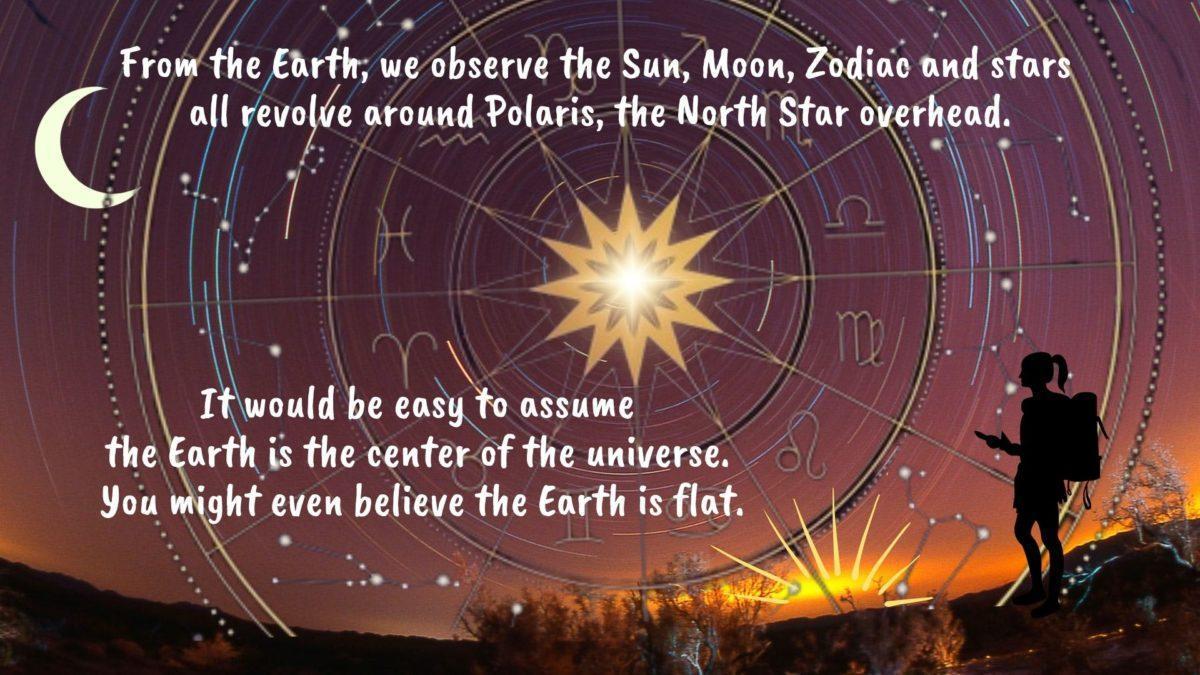
8,000 years ago Sumerians were skilled astronomers.
Sumerian math is based on the number 60. Most of us would call that “higher math”. Their base-60 numbers used decimal places to calculate precise movement of the planets. Sumerians counted years in 60-year groups, much like our centuries. This is why we now count 60 minutes in an hour and 60 seconds in a minute. Amazing!
Sumerians used a 12-hour day divided into 12 equal hours, with day and night always the same length. (And that would be true if you’re standing on Earth’s equator, there’s no axis tilt, and no seasons.) The name they gave to the Gods was Anu-nnaki, meaning “Those who came from Heaven to Earth.” These beings were said to possess advanced astronomy and wrote the first calendars. We have a lot of explaining here!
5,000 years ago, Sumerians knew that planets are round
They knew the Earth is part of a system of orbiting spheres. But in the West, people believed the Earth to be flat until around 500 BCE, when Greek astronomers studied eclipses. Greeks “rediscovered” the round shape of the Earth. In the 2nd century CE, Egyptian mathematician Claudius Ptolemy showed that the Earth was a central sphere with the Sun, Moon, and planets orbiting around her.
The Sun-centered theory came from Polish astronomer Copernicus.
1,300 years later, Copernicus knew the Earth revolves around the Sun. And he waited until his deathbed in 1543 to publish the book. Smart guy! The following century Galileo Galilei (1564-1642) expanded on Copernicus’ theory by comparing the Copernican (sun-centered) system with the Ptolemy’s (Earth-centered). But on “grave suspicion of heresy” Galileo was forced by Vatican authorities to recant and renounce his beliefs. He spent the rest of his life under house arrest.
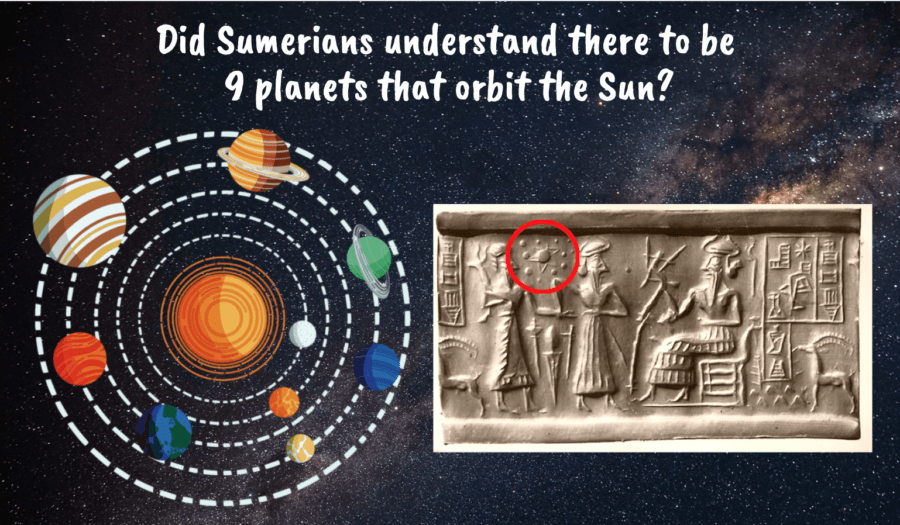
Once again, a simple question has given us another rabbit hole and so many unanswered questions!
Weekday Traditions In Various Cultures.
Back to the weekdays – a cursory scan of the planetary gods below suggests that it all started in Mesopotamia. And from there spread West to Europe, eventually East to Asia. For example, here in Indonesia the modern weekdays are from Arabic 1st, 2nd, 3rd, etc. And the Balinese weekdays reveal affinity to old Javanese Buddhism and early Brahmic religions of India. Could the Anunnaki Sumerian civilization in Mesopotamia have been partly concurrent with the ancient Indian blue gods of the Mahabharata, such as Mani and Krishna? Who knows?
It is clear that the seven celestial bodies hold very high significance in all cultures. The similarities and differences below reveal how various traditions may be connected via religion and language, further indicating our history could be very old indeed. See the image below.
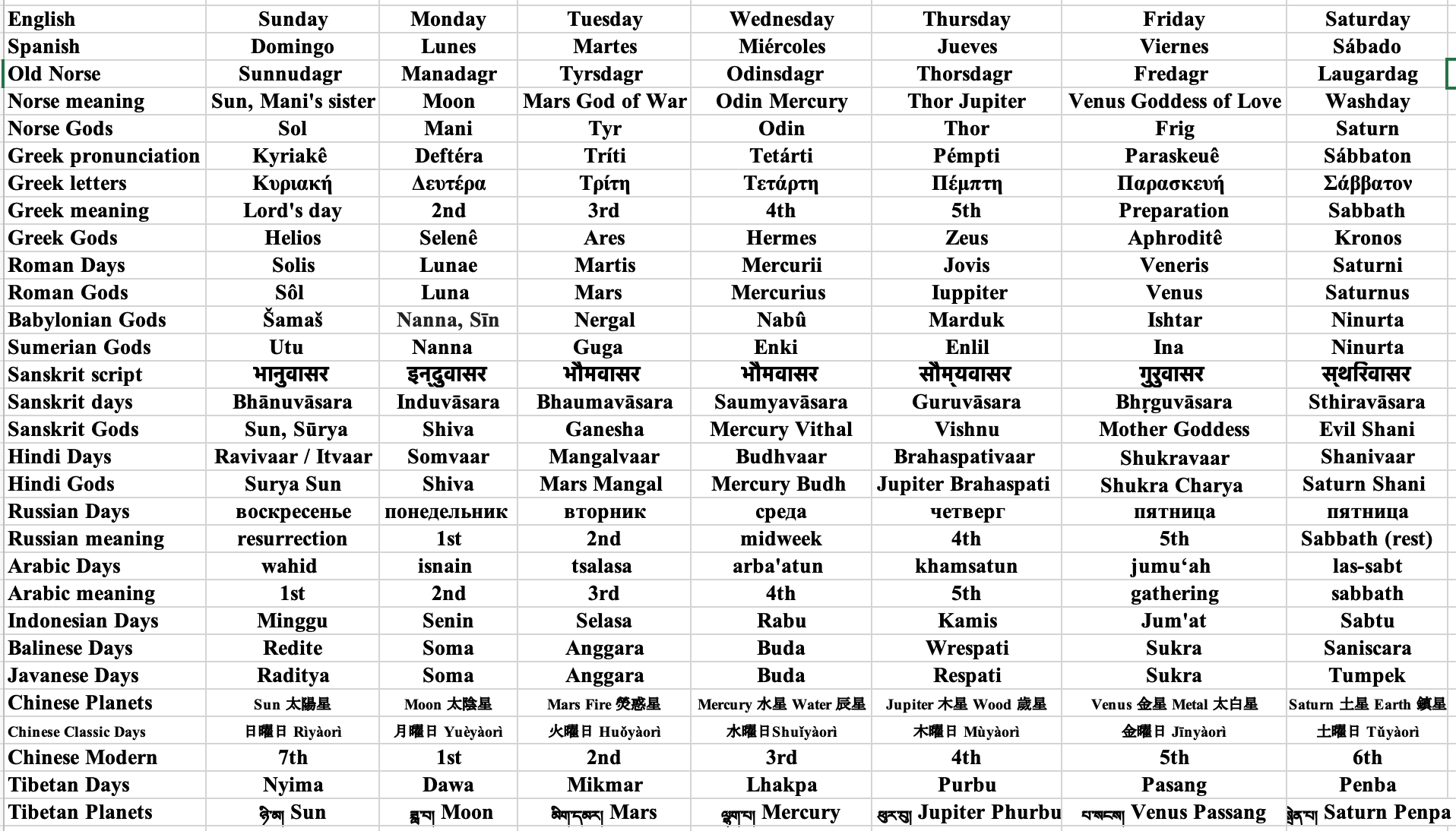
Thanks for watching!
Further Reading:
- The Order of the Days, https://www.youtube.com/watch?v=R3dZBCC0fYk&t=442s
- Top 10 Ancient Mesopotamian Goddesses
- Top 10 Ancient Mesopotamian Gods
- Top 10 Ancient Roman Goddesses
- Top 12 Surprising and Fascinating Facts about Ancient Sumer
- Top 10 Sumerian Gods and Goddesses, https://www.ancienthistorylists.com/mesopotamia-history/top-sumerian-gods-goddesses/
- https://blog.thevalhallanation.com/2020/04/20/norse-origin-days-of-the-week/
- https://friesian.com/week.htm
- The Seven Alchemical Metals and
Planets of the Week - http://nexusilluminati.blogspot.com/2016/09/the-seven-alchemical-metals-and-planets.html
- https://www.hermetic.ch/cal_stud/hlwc/why_seven.htm
- https://www.sanskritimagazine.com/indian-religions/hinduism/significance-and-meaning-of-seven-days-of-the-week/
- https://www.crowl.org/Lawrence/time/days.html
- https://wikimili.com/en/Names_of_the_days_of_the_week
- https://curiosmos.com/this-ancient-sumerian-tablet-is-the-oldest-description-of-the-great-flood/
- https://mysteriesrunsolved.com/2020/11/the-sumerian-king-list-8-kings-ruled-241200-years.html


